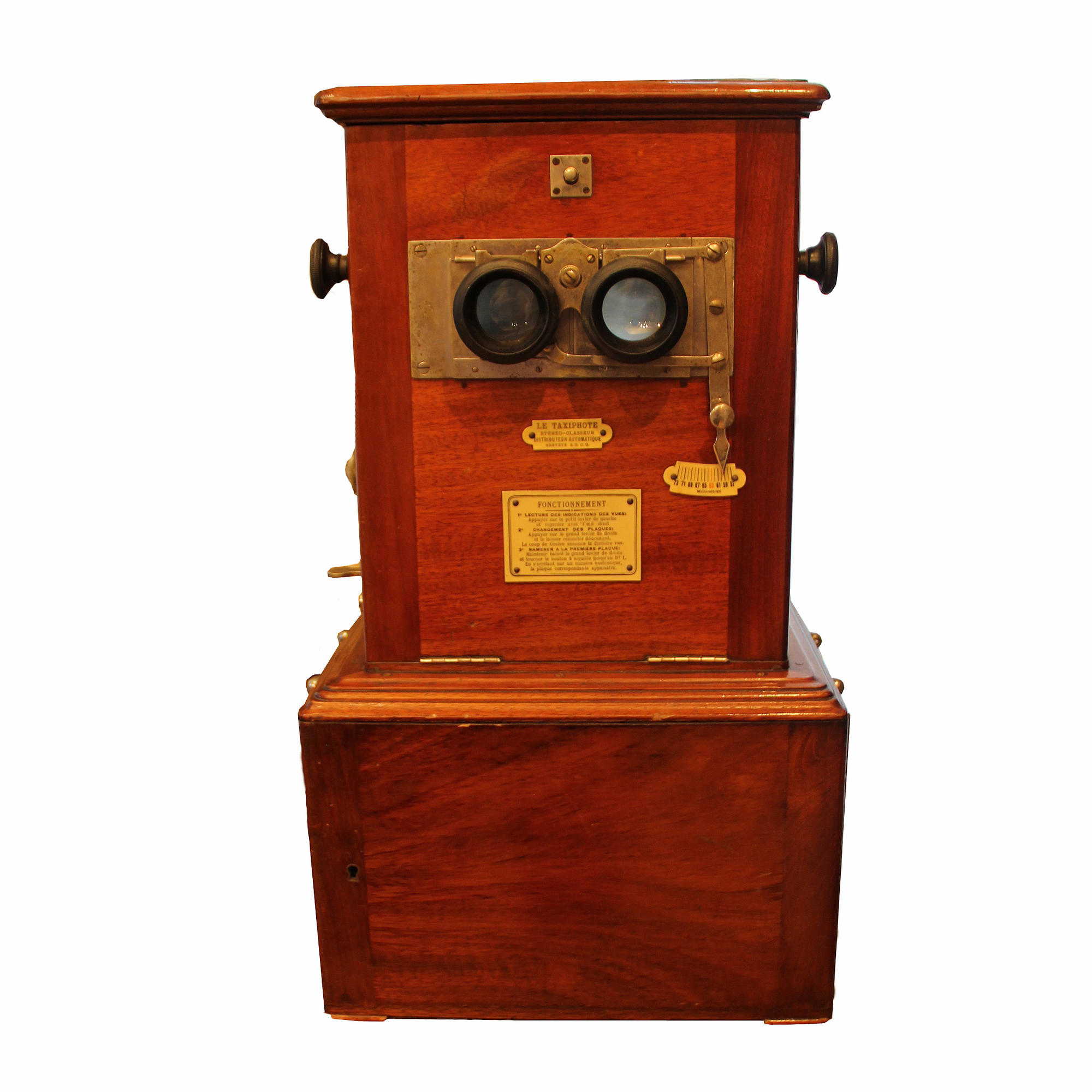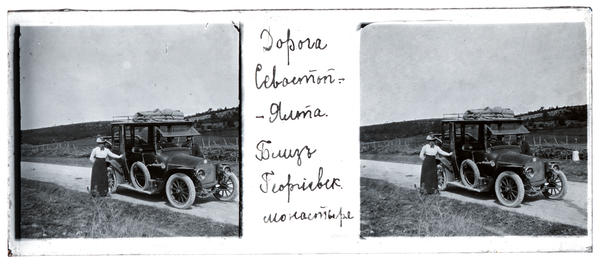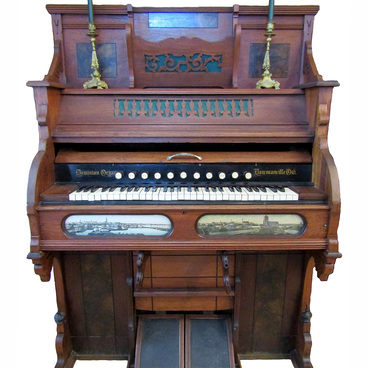Stereoscope is an optical device making photos look like 3D. In order to get such an image, you would need two photos taken from two different points, and the distance between them needs to be equal to the distance between the eyes. The left eye will be seeing the first and the right eye — the second photo, so that the juxtaposition gives the effect of a double picture. That is why such stereoscope is called the binocular device.
Stereoscope
Creation period
No later than 1913
Dimensions
48,5x28x28 cm
48.5х28х28 cm
48.5х28х28 cm
Technique
Shell – nut wood, mechanism – bronze parts, stereo pairs - glass
Exhibition
2
Open in app#1
Stereoscope
#24
#25
As long ago, as back in the 15th century Leonardo da Vinci attempted to receive stereoscopic images out of flat ones. The first device of such type called the aperture stereoscope appeared in the mid-19th century, invented by the Scottish mathematician Elliot approximately in 1829-1831. Double-images (stereo pairs) were looked at through an aperture in the partition. There were two separate compartments for cassettes with images. In order to get a 3D picture, the photos were placed in the compartments in the following way: the left one was for the right eye, and the right one — for the left eye.
#26
In 1849, the Scottish physicist, the inventor of kaleidoscope David Brewster presented his version of stereoscope.
#27
He placed optical lenses (oculars) in his device. Because of that, the stereoscope provided a magnified view of the photos as if they were hanging before the eyes of the viewer at a certain distance. This allowed for comfortable study of all the details without putting a strain on the viewer’s eyes.
#2
Brewster was not able to find a sponsor for manufacturing stereoscopes in England. In 1851, he sold the manufacturing rights to Jules Duboscq, and in the same year, they together presented a working device at the Great Exhibition of 1851 in London.
#12
Inside the stereoscope
#28
The device caused a sensation, Queen Victoria took interest in stereoscopes, and their commercial manufacturing began.
#22
Only in the UK, over a million of Brewster’s prismatic stereoscopes were sold. In London, London Stereoscopic Company rolled out an ambitious advertising campaign Not a Single Home without a Stereoscope. Indeed, by 1860, almost every British family had a stereoscope, and the stereoscopic plates with beautiful sights of different countries packed the shops. The prices for the cassettes with such images did not exceed the prices of postcards today.
#3
One of the stereo pairs made before the October Revolution. Travelling across the Crimea
#29
In this stereoscope, the lenses have a distance of 2.5 inches between them — a standard distance between human eyes. Their height does not exceed 3 inches (about 7.5 cm), which makes the device easy and comfortable in use.
#6
A box with cassettes of stereo pairs
#23
This exhibit was manufactured no later than 1913; the museum acquired the stereoscope together with home-kept stereo pair from a Moscow family Semyonovs. There are 12 cassettes with pictures of different places; some cassettes are not fully equipped with stereo pairs. The photos in the collection belong to 1912-1934.
read morehide
00:00
00:00
1x
Stereoscope
Creation period
No later than 1913
Dimensions
48,5x28x28 cm
48.5х28х28 cm
48.5х28х28 cm
Technique
Shell – nut wood, mechanism – bronze parts, stereo pairs - glass
Exhibition
2
Open in app
Share






